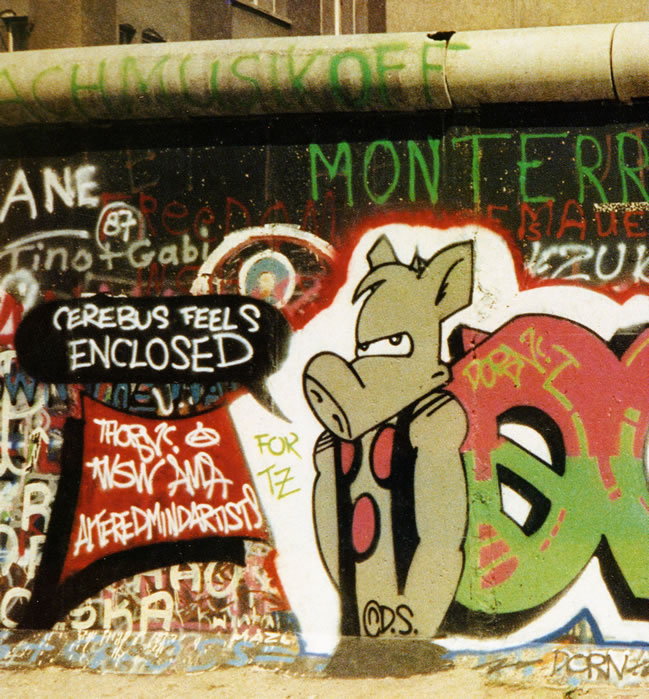Joseph Alberts (AKA 'James Sorrell', 'J.M. Matthews' and 'Spindack') has been publishing his own comics online at
Webcomics Nation for over 5 years. When
not working as an online publisher and broadcaster, Joseph is busy compiling
a manuscript for The Parallax Notes, to be a self-published book
collecting his writing and art work from over the last 10 years. Visit his Amazon Store here.
LIFE AFTER CEREBUS
There's something truthful about Dave Sim and the path he's chosen on his career. His honesty, how when he says something, and he's going to achieve something, despite a mountain of doubt and oppositions, haters, and critics, he still somehow proves himself right by doing exactly what he said: Draw 300 20-page issues about a sword and sandal aardvark and his assort adventures and mishaps, whose story ended up being one of the longest, most epic narratives told by anyone, let alone Dave Sim, sitting pretty at about 6,000 pages long.
Dave Sim channelled both his youthful anger and masculine philosophy into one tasty high fantasy action-adventure, dramatic offering of a meal of a comic book series. One that seems to go on well beyond forever, and that's been around longer than most independent and self-published comics. It stands as one of the oldest black and white independent comic books of all time, if not also one of the most famous and commercially successful. It is a book series that is both classical and progressive at the same time, something very uncommon for the era it was born out of. You don't find comics as original, literary, creative, unique and visionary as Dave Sim's just everyday.
All of these things and more are why I always loved the work of Dave Sim. Even when the whole world seemed like it wanted to overpower him and force him to back down, back down from expressing the honest truth of what he is in literary and visual form, even when most others wanted him to back down, he never did. Confidence like that takes guts. It takes courage and a lot of energy.
Whenever I hit a brick wall in my own comics work, I often find myself drawn to thumbing through copies I own of the Cerebus phonebook collection for inspiration. They have a heftiness to them, most of them, that is hard to mistake with other books.
The Cerebus Guide to Self-Publishing also helped me find inspiration a lot of the time too. Dave Sim is a Master Builder of the comics and sequential art variety, no doubt about that, but I have no clue how future posterity will react to a man of the calibre of Dave Sim. But I imagine teenagers of future generations just like myself will also find similar literary inspiration in Dave Sim's work.
Shine on, Dave Sim.
Shine on.



































